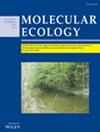Host Specificity and Geographic Dispersion Shape Virome Diversity in Rhinolophus Bats
Abstract
Rhinolophus bats have been identified as natural reservoirs for viruses with global health implications, including severe acute respiratory syndrome–related coronaviruses (SARSr-CoV) and swine acute diarrhoea syndrome-related coronavirus (SADSr-CoV). In this study, we characterised the individual viromes of 603 bats to systematically investigate the diversity, abundance and geographic distribution of viral communities within R. affinis, R. sinicus and 11 other bat species. The massive metatranscriptomic data revealed substantial viral genome resources of 133 vertebrate-infecting viral clusters, which contain occasional cross-species transmission across mammalian orders and especially across bat families. Notably, those viruses included nine clusters closely related to human and/or livestock pathogens, such as SARS-CoVs and SADS-CoVs. The investigation also highlighted distinct features of viral diversity between and within bat colonies, which appear to be influenced by the distinct host population genetics of R. affinis and R. sinicus species. The comparison of SARSr-CoVs further showed varied impact of host specificity along genome-wide diversification and modular viral evolution among Rhinolophus species. Overall, the findings point to a complex interaction between host genetic diversity, and the way viruses spread and structure within natural populations, calling for continued surveillance efforts to understand factors driving viral transmission and emergence in human populations. These results present the underestimated spillover risk of bat viruses, highlighting the importance of enhancing preparedness and surveillance for emerging zoonotic viruses.

 求助内容:
求助内容: 应助结果提醒方式:
应助结果提醒方式:


